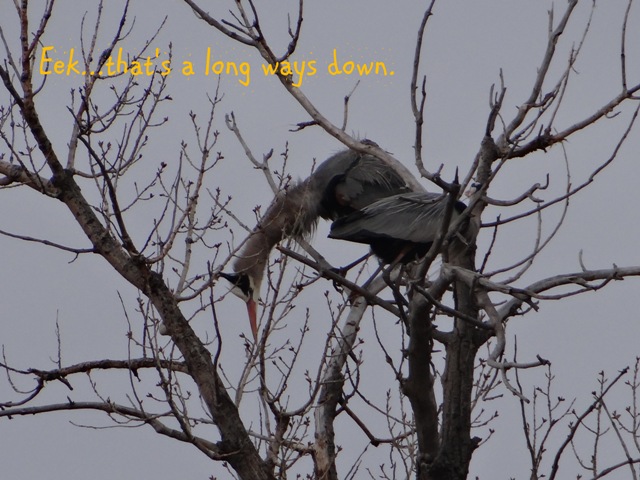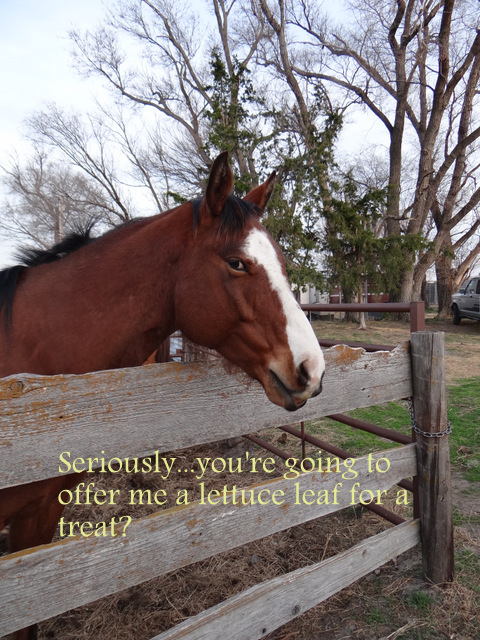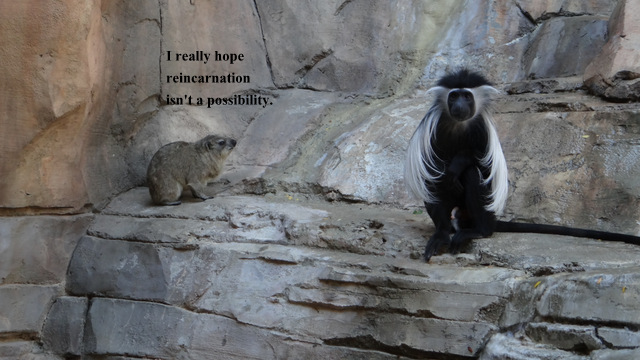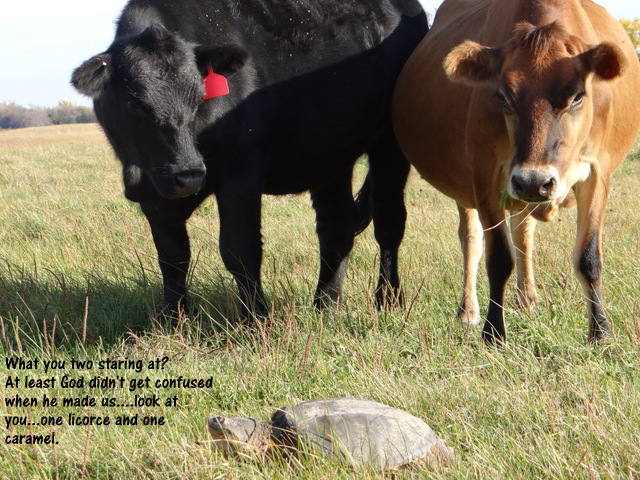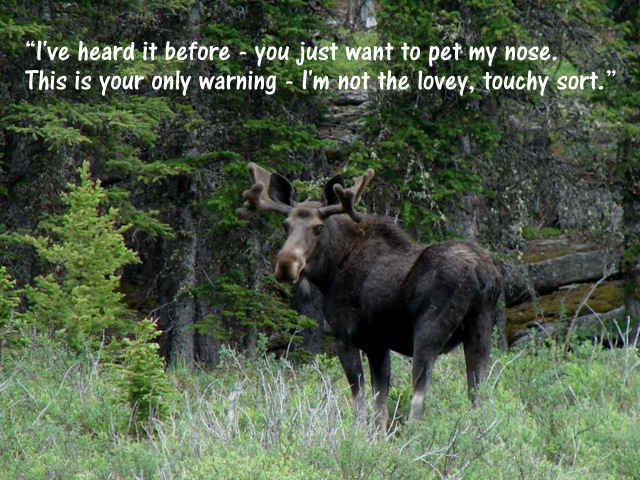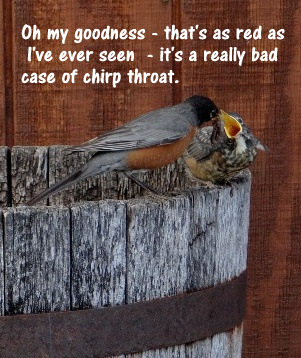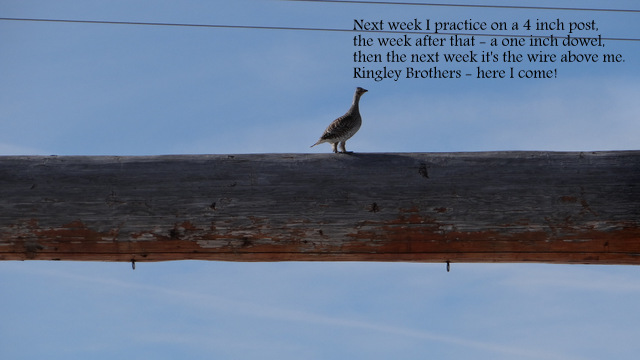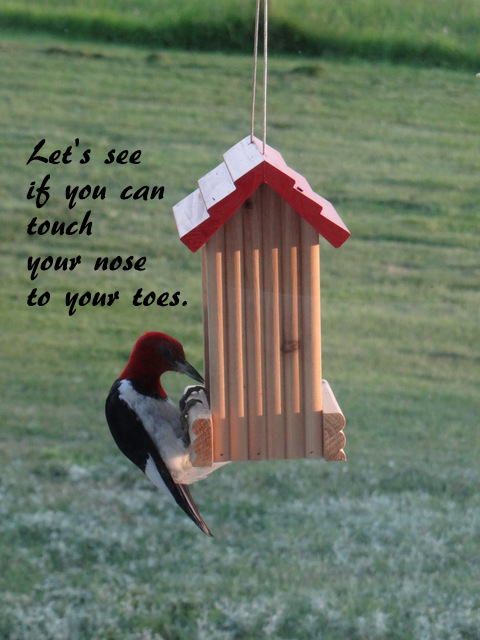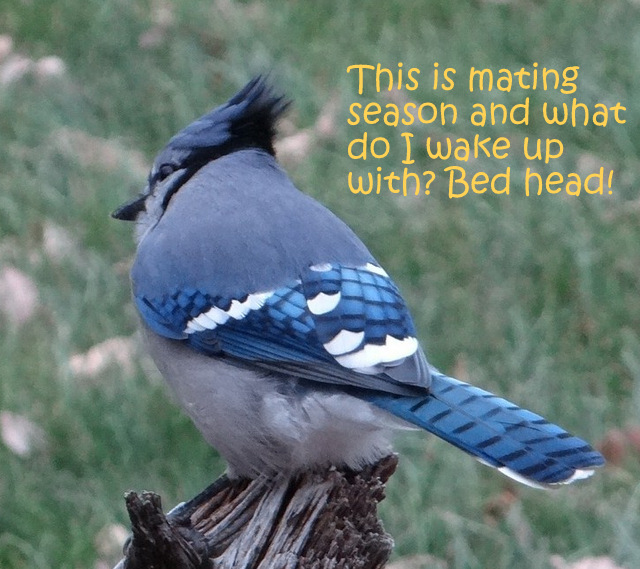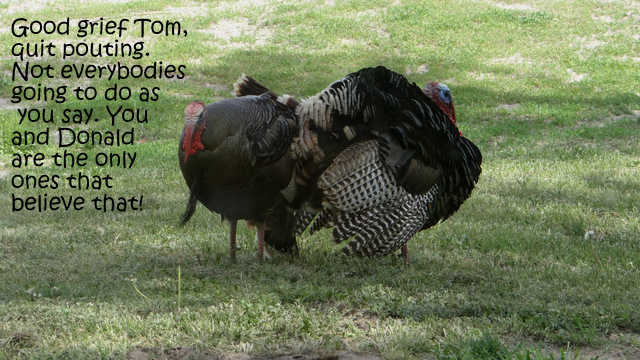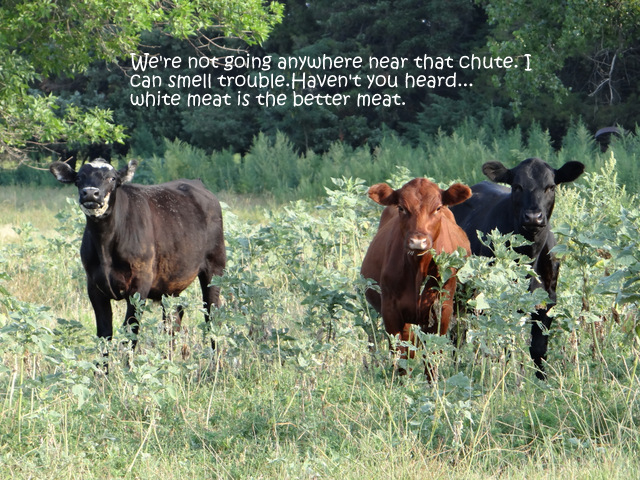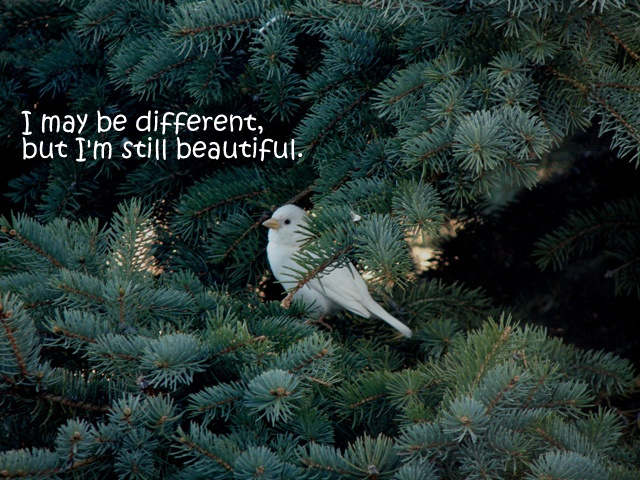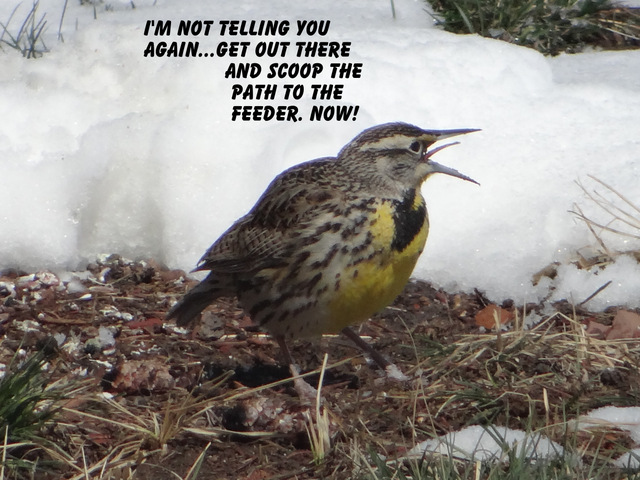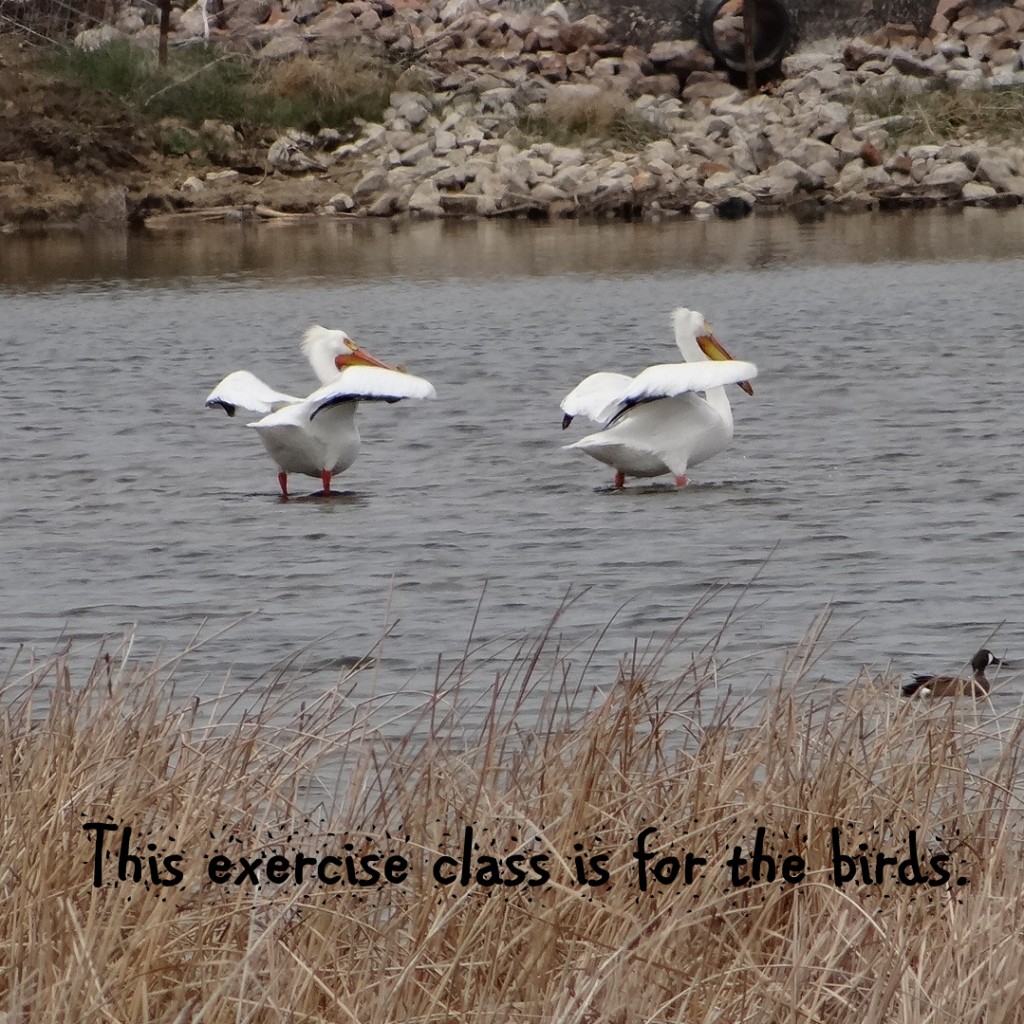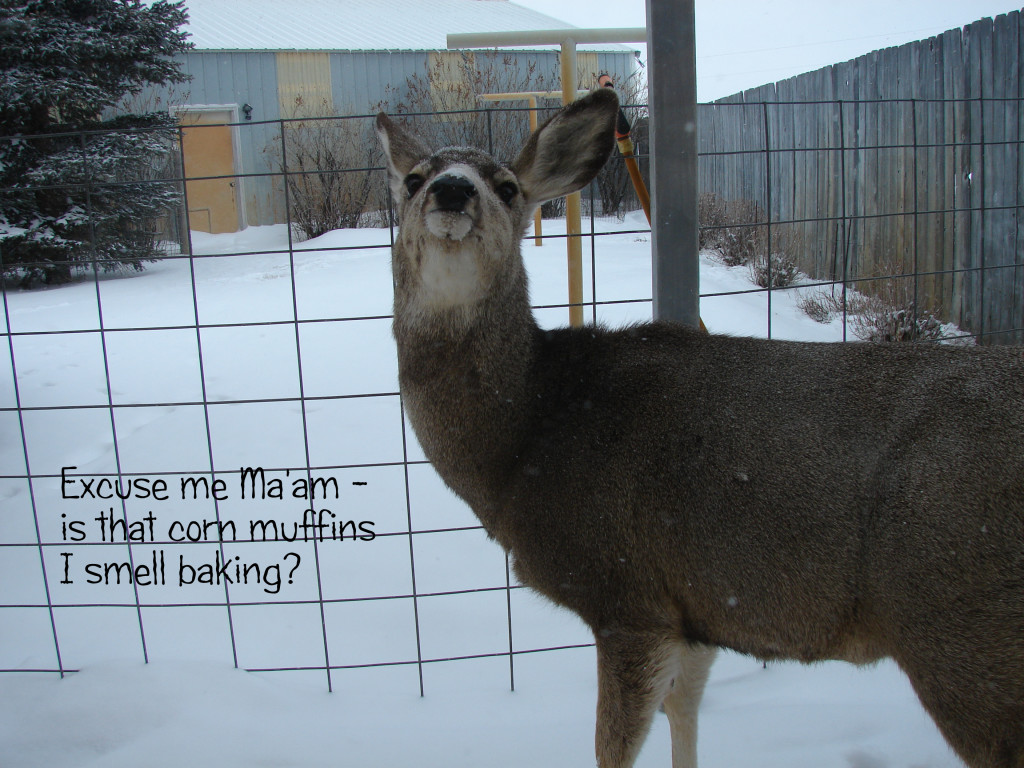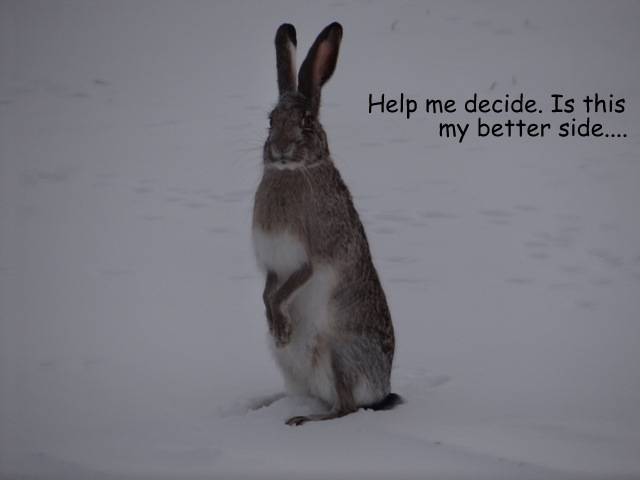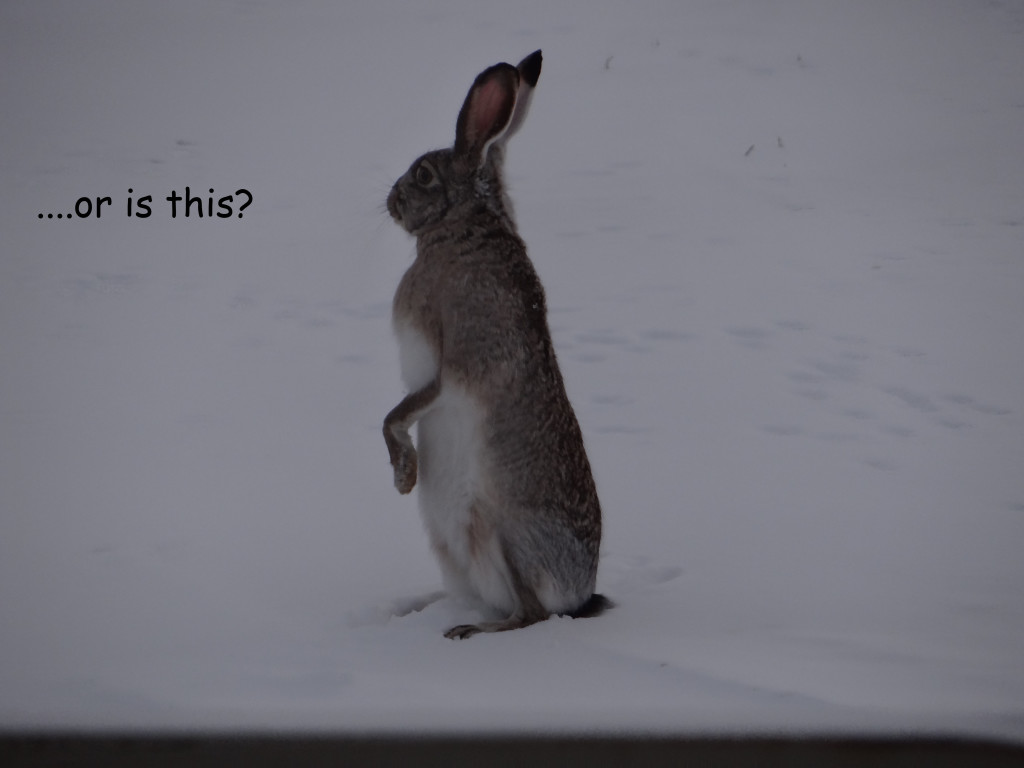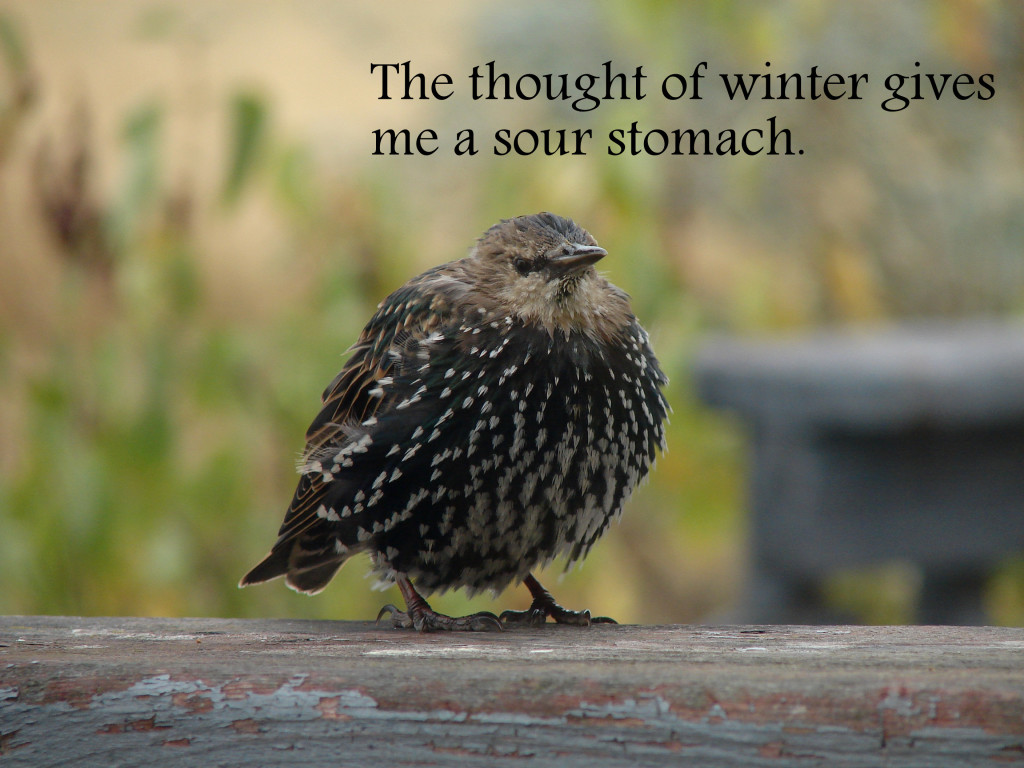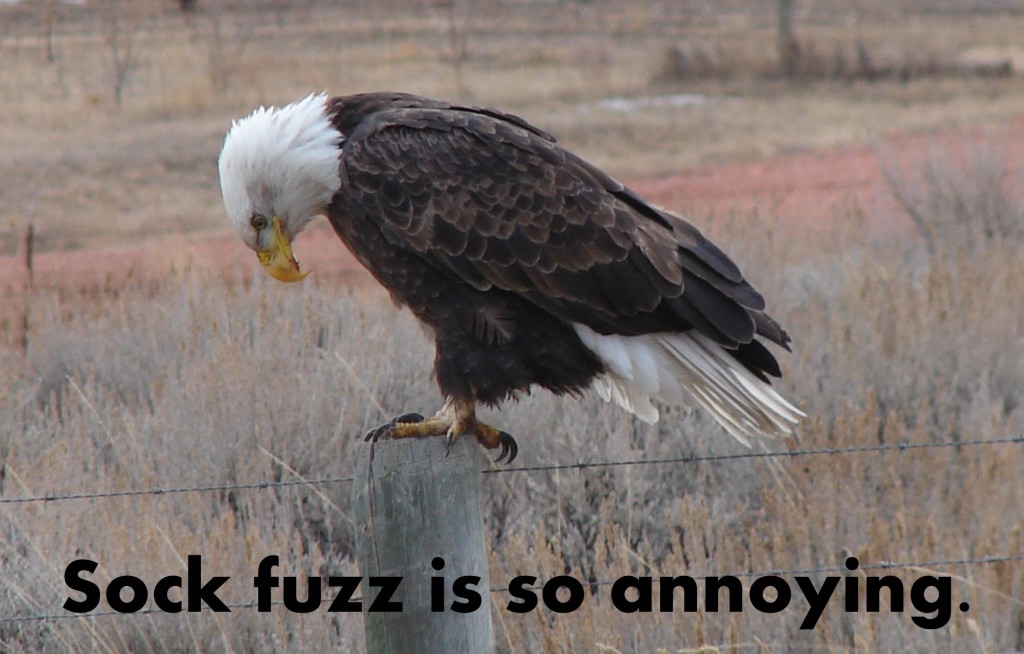This is one of the fine looking – although suspicious – horses at my sister’s ranch.
My husband captured these two Canada geese sitting on top of our neighbor’s house this morning. He is credited with the caption as well. Thanks for the help, Stan.
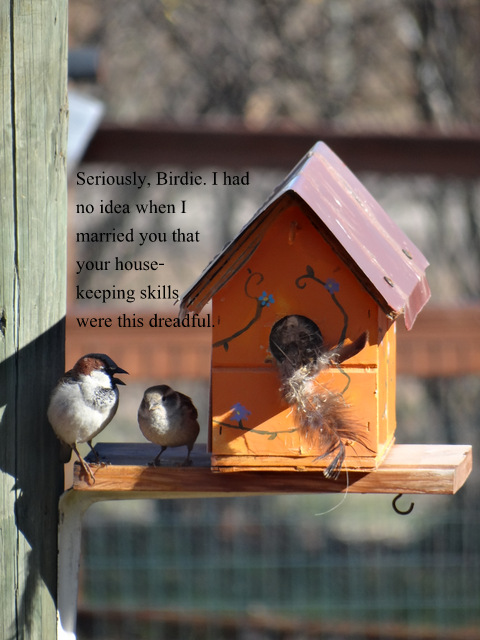 I
I
I captured these sparrows this week at one of our birdhouses. I hope in the next episode, Birdie finds her voice!
All of the pictures I have used for this page have been my own pictures. I have diminished my inventory for photos that can be used for this page. I will resume the page when inventory increases. Thank-you for your patience.
Although the species is named the Angola Colobus Monkey, very few live in Angolia, but inhabit other areas of the Congo Basin. Unlike other monkeys, the Colobus do not have thumbs. (Photo taken at the Henry Doorly Zoo in Omaha, NE)
These cows are smart to be wary. Snapping turtles can be very aggressive when cornered on land. They have a strong enough bite to easily cut off human fingers. There are some reports that these turtles can live as long as 100 years.
The praying mantis does not discriminate between good bugs and bad bugs. She welcomes either one to her dinner plate. No other insect can turn their heads 180 degrees. Although the mantis has two large eyes, it only has one ear which is located on the underside of its belly.
Unlike most other deer species moose are solitary animals and do not form herds. Although generally slow moving and sedentary, moose can become aggressive and move quickly, running at 35 mph if angered or startled. Calves grow rapidly and can outrun a person by the time they are 5 days old.
As a mimic, the gray catbird ranks second only to the mockingbird. In spring you might hear the male mingling musical renditions of all the other songbirds including shrieks, squeaks, whistles, cackles, and of course the cat’s meow. If, when you see a gray bird and you are unsure if it’s a catbird, just ask it to raise its tail. The catbird sports a red or rusty patch beneath that tail.
Bumblebees are BIG pollinators. Both the queens and worker bees collect pollen, transporting it back to the colony in pollen baskets on their hind legs. Sometimes the bee does not even have to land on a flower to pollinate. The buzzing alone loosens the pollen and sets it drifting through the air. Thirty species of bumblebees worldwide are either endangered or thought to be extinct from habitat loss and pesticides.
The American robin belongs to the thrush family and is the state bird of Connecticut, Michigan, and Wisconsin. It is one of the earliest bird species to lay eggs in the spring. When you see a robin cocking its head and then pulling a worm from the ground, it appears that he hears the worm, but he actually hunts by sight.
A male sharp-tailed grouse performs a “display” during courting season. These entertaining, dancing maneuvers are held on communal dancing grounds, called leks. A female may visit a lek up to ten times before making a decision on a mate, and she may go as far as to sample two different leks.
The red-headed woodpecker is the most omnivorous (eating any sort of food) of all woodpeckers. It has been seen eating insects, spiders, earthworms, nuts, seeds, berries and fruit, and sometimes even eggs and nestlings of other birds. The male is the one that carves out the cavity in a tree to use for nesting, but the female is the one that ok’s the choice by tapping on the tree.
Sparrows love living next to gardens where there is plenty of food for them – insects, seeds and spiders. The population of this common bird is on the decline because of fewer gardens and loss of food sources provided in these gardens. They are now on the threatened birds’ list in many parts of the world.
It won’t be that long until we start to see some of the wildflowers in bloom. May and June are considered the prime months of mountain flowers. It’s best to resist the urge to pick them as this will take away from seed production. We want to keep our mountains beautiful, so it’s much better to take a picture to take home than the actual flower. (This one is taken at Hettinger Park in the Bighorns, west of Buffalo, WY the third week of June.
The largemouth bass is the most popular game fish in North America. The world record largemouth bass was caught out of Lake Biwa in Japan and weighed over 22 pounds. Except for humans, adult largemouth bass are the top predators in the aquatic ecosystem.
The average life span of a fox is 2-6 years. The male fox is called a dog while the female is known as a vixen. Fox get a bad rap about eating chickens, but they also eat other meats, plants, fruits, berries, and even those snakes we don’t like. They not only have excellent eye sight, but superb hearing too which allows them to hear rodents under the ground. And aren’t they cute?
Who would have guessed? Blue jays feathers are not actually blue. The bright cobalt color is the result of the unique inner structure of the feathers, which distort the reflection of light off the bird, making it look blue. That’s a little hard for me to get my head around – how about you? Supposedly, if you crush a blue jay feather it will no longer be blue.
Squirrels live in almost every habitat, except high polar regions and the driest of deserts. They have large eyes and excellent vision. Groups of squirrels are called a scurry or dray. They are a member of the rodent family and are quite entertaining to watch with their acrobatic maneuvers.
Although wild turkeys feed on the ground and make their nests on the ground, they roost high up in the trees. When it’s time for the hen to lay her eggs, she will lay one egg a day – sometimes up to twenty eggs. The young chicks can make short flights when only two weeks old. They will stay with mom until the following spring at which time they will leave her with a very empty nest and start their adult lives.
These beef cattle’s message must be getting across. Beef consumption has trended downward since the 1970’s and poultry consumption has dramatically increased since that time. In 1970, chicken consumption was 40.2 pounds per person and in 2007 it had risen to 86.5 pounds per person per year. Personally, I don’t think their is anything quite as good as a medium rare angus steak.
This is a leucistic sparrow that visited our place for three weeks one fall. He was a special treat! Leucism can be complete as in the sparrow above or it may just have patches of white here and there. It is a genetic mutation that prevents pigment from depositing in some or all of the feathers. Albinism, on the other hand, prevents pigment in the feathers, beak, eyes, legs, and feet.
The meadowlark is a member of the blackbird family. There are so many similarities between the eastern and the western meadowlark, that only an expert can tell the difference if the birds are sitting side by side. However, if they start to sing, it’s another story as their songs are quite different. They themselves are better at recognizing their own species and very rarely interbreed.
When seeing a northern flicker, pay attention when it flies. Do you see yellow or red beneath the wings? The yellow shafted northern flicker is more common in the east, the red is seen mostly in the west. If you live in the central part of the country, you can see both. The yellow shafted is the state bird of Alabama and is known as the yellowhammer in that state.

The rosy finch loves the cold. They are most often found on the top of mountains, ranging from Alaska to California, but sometimes move inward to other mountainous areas. Because of the birds remote breeding sites, they have little contact with humans. This seems to make them almost fearless when a person does approach them. Sometimes the lucky person can get within 3 feet of this little songbird.

Penguins are flightless birds that live in the Southern Hemisphere. The largest is the Emperor species that are nearly 4 feet tall. The smallest is the Little Blue Penguin, which is only 16 inches tall. Penguins take in a lot of saltwater when searching for fish. They have a supraorbital gland behind their eyes that filters this saltwater from their blood stream. It is then excreted through their beaks or by sneezing.

There are 260 different species of monkeys. All monkeys have opposable thumbs, allowing them to use tools and play games. The world’s smallest monkey is the pygmy marmoset and weighs no more than 4 ounces. The world’s largest monkey is the mandrill. It weighs around 77 pounds. Apes and gorillas are not classified as monkeys.
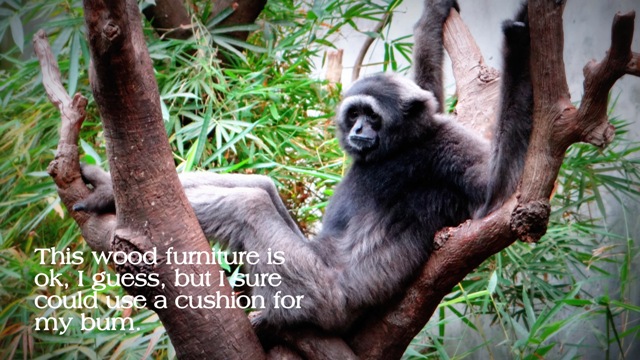
Great blue herons are expert fishers. With their blade like bills, they stab the fish and then swallow it whole. They have been known to choke to death when the fish was too large for their skinny throats. They also eat mice, insects and other small creatures. The adult great blue heron has no natural predators. Generally, they make their nests in the tops of tall trees.
